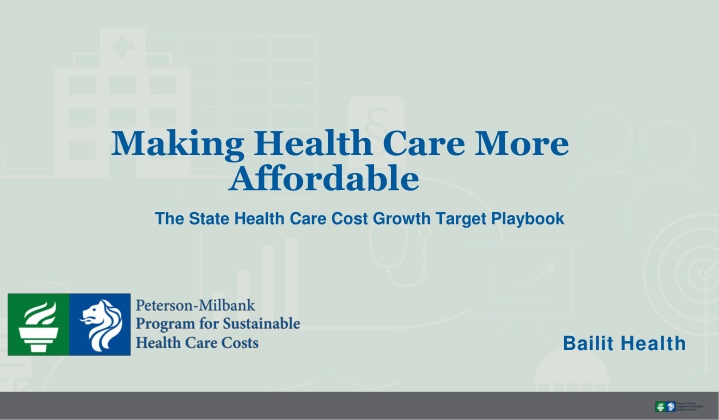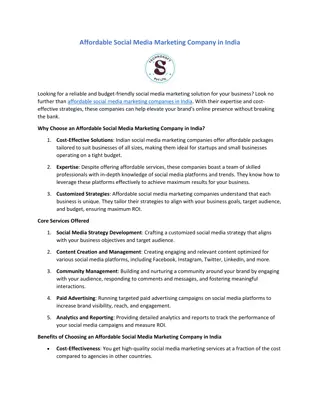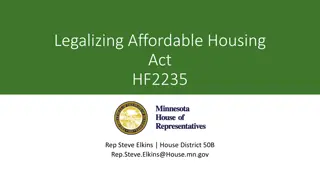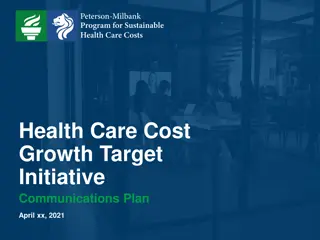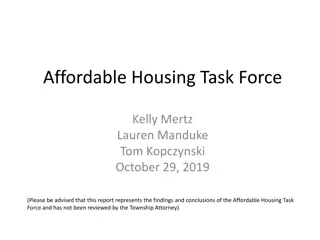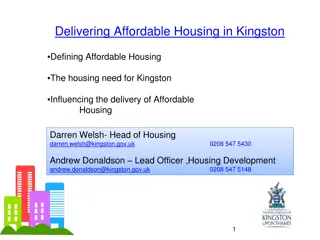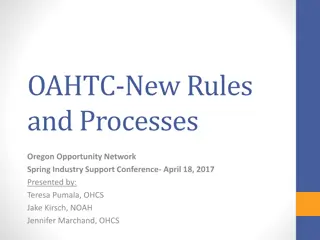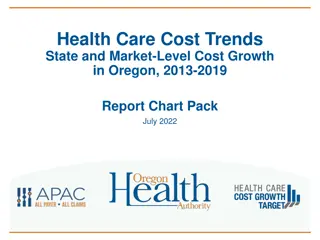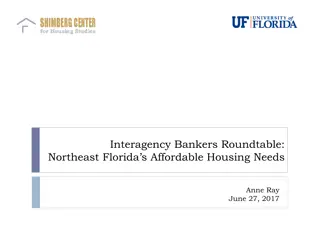Making Health Care More Affordable: State Health Care Cost Growth Target
Health care costs have burdened states, employers, and families for decades. Explore the playbook for achieving affordability through state-led cost growth targets.
Download Presentation

Please find below an Image/Link to download the presentation.
The content on the website is provided AS IS for your information and personal use only. It may not be sold, licensed, or shared on other websites without obtaining consent from the author.If you encounter any issues during the download, it is possible that the publisher has removed the file from their server.
You are allowed to download the files provided on this website for personal or commercial use, subject to the condition that they are used lawfully. All files are the property of their respective owners.
The content on the website is provided AS IS for your information and personal use only. It may not be sold, licensed, or shared on other websites without obtaining consent from the author.
E N D
Presentation Transcript
Making Health Care More Affordable The State Health Care Cost Growth Target Playbook Bailit Health
The Peterson-Milbank Program for Sustainable Health Care Costs Working with the Peterson Center on Healthcare, the Milbank Memorial Fund, with Bailit Health, is providing technical assistance to Connecticut, New Jersey, Oregon, Rhode Island, and Washington over two years. These states have set targets for per-capita growth in total health care spending statewide, as well as which factors are driving the most cost growth. This work is designed to inform accountability measures that will make health care more affordable for states, employers, especially small business, and households.
States Face a Growing Health Care Affordability Crisis Health care costs have grown faster than the economy for decades Rising costs burden states, employers, and families COVID reinforced the need to rein in health care cost growth
Fragmented solutions havent tamed the trends Sector-specific solutions: Lack a holistic understanding of health care spending and what is driving unsustainable increases Shift, rather than decrease, costs Are no match for health care consolidation, which drives up prices faster
A State-Led Solution: Health Care Cost Growth Target Programs
What is a cost growth target? Cost growth target: An expectation of how much per capita total health care spending in the state should grow annually. A public-private approach to improving affordability that sets an annual target value for health care cost growth tied to the economy and/or income growth. Cost growth target program: Establishes the infrastructure necessary to gather data, publishes spending performance against the target, analyzes the data, and proposes shared solutions to address drivers of health care costs.
Understanding cost growth targets What it is A series of practical steps to gain insight into statewide health care spending, informed by actual state experience What it is not A one size-fits-all approach that every state should implement in the same way. A government-run system. Addressing health cost growth is a shared responsibility for government and industry. A forum for all stakeholders to identify issues and discuss solutions An opportunity to develop a complete picture and drill down to specific causes and impacts of spending growth. An excuse to cut benefits and services A approach designed for long-term use and impact
How can you create a cost growth target program? The Playbook for Implementing a Cost Growth Target includes: A roadmap for program design and implementation for states. Concrete steps, practical tools, best practice strategies, and insights to guide states through the work.
Six Activities and Steps to Implement a Health Care Cost Growth Target
1. Program Planning, Development & Sustainability Approaches to Authorizing a Cost Growth Target Program Determine the appropriate vehicle for authorizing the program Seek participation from all sectors to guide policy and program administration Build a core program management team Lay the foundation for future sustainability
2. Public-Private Stakeholder Engagement Explain the health care cost growth targets Identify goals for stakeholder engagement Develop a strategic communications plan 3. Establishing the Target Methodology & Value 1. Identify a target methodology and calculate the value 2. Determine the target duration and any adjustments to the methodology or value 3.Monitor the conditions that might call for revisiting the target methodology or value
5. Understanding the Drivers for Spending Growth 6. Accountability & Action to Slow Spending Growth Set policies for health care cost growth accountability, e.g., the application of positive or negative incentives for meeting the target Build a process for holding entities accountable Pursue strategies to mitigate cost growth, such as increasing value-based payment, capping commercial insurer rate increases, containing growth in prescription drugs, or enhancing health care market oversight
Oregon's Accountability Measures to Slow Cost Growth Market Oversight In 2021, Oregon passed a bill directing the Oregon Health Authority (OHA), which administers the state s target program, to also oversee material change transactions, which include mergers, affiliations, and acquisitions of a certain size. The framework for OHA s review includes the impact of such transactions on the state s ability to achieve its target. Massachusetts and California are also using market oversight as an affordability strategy.
For more information Visit the Peterson-Milbank Program for Sustainable Health Care Costs website Read the complete Playbook for Implementing a State Health Care Cost Growth Target
